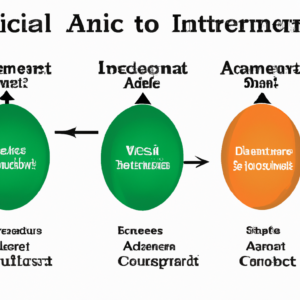
Identifying Reliable Support Levels in Trading
# Finding Reliable Support Levels
In investing and trading, identifying reliable support levels is crucial for developing effective entry and exit strategies. Support levels are specific prices at which a stock, or any other traded asset, historically has difficulty falling below. Recognizing these levels can help traders and investors make informed decisions. This article will delve into methodologies and steps to find reliable support levels.
Understanding Support Levels
Support levels are found in the charts of financial markets. They represent a price level or area on the chart where the price of an asset sees a pause or rebound more than once. These levels are significant because they represent the moment in the market where buying interest is significantly strong and surpasses the selling pressure. It can be a psychological level or based on past performances.
Using Price Charts
Price charts are essential tools for identifying support levels. There are various types of charts, such as line charts, bar charts, and the most popular among traders, candlestick charts. These visual aids can help spot patterns that suggest where support levels may exist.
Identifying Historical Levels
The first step is to analyze historical data. Look for prices where the stock has bounced back repeatedly after a decline. These are potential support levels. The more often the price rebounds from a specific level, the more reliable that support level is considered.
Trendlines
Another method is by drawing trendlines. By connecting the low points of a stock price during a period, you can visualize potential support levels. A rising trendline indicates that the support level is moving up, suggesting that the stock is in an uptrend.
Utilizing Technical Indicators
Technical indicators can also provide insight into where support levels might be found. Some of the most common indicators for this purpose include moving averages, Fibonacci retracement levels, and pivot points.
Moving Averages
Moving averages smooth out price data to identify trends. A moving average can act as a support level during uptrends, where prices tend to bounce off the moving average line.
Fibonacci Retracement Levels
Fibonacci retracement is a tool used to identify possible support levels based on the Fibonacci sequence. By measuring the distance between significant price highs and lows, the tool provides ratios (23.6%, 38.2%, 61.8%, etc.) that many traders watch as potential support levels.
Pivot Points
Pivot points are calculated using the high, low, and close of the previous trading day. The main pivot point is significant, but the calculated support and resistance levels around it can serve as markers for potential turnarounds in price.
Confirming Support Levels
After identifying potential support levels, confirmation is key. This can be done through observing trading volume, price action, or additional indicators that might confirm the strength of the support.
Trading Volume
Higher trading volume at a support level indicates strong interest and likely confirms the level’s reliability. A bounce from a support level on high volume can be a bullish sign.
Price Action
Traders should also observe the price action. Patterns like hammer candles or engulfing patterns can indicate a strong rejection of lower prices, reinforcing the support level’s significance.
Conclusion
Finding reliable support levels requires analyzing historical price data, utilizing technical indicators, and confirming with volume and price action. By mastering these techniques, traders and investors can enhance their market analysis, making well-informed decisions based on discernible support levels. It’s also vital to remember that no single method is foolproof; combining multiple approaches can offer a more comprehensive view of potential support levels and their reliability.
